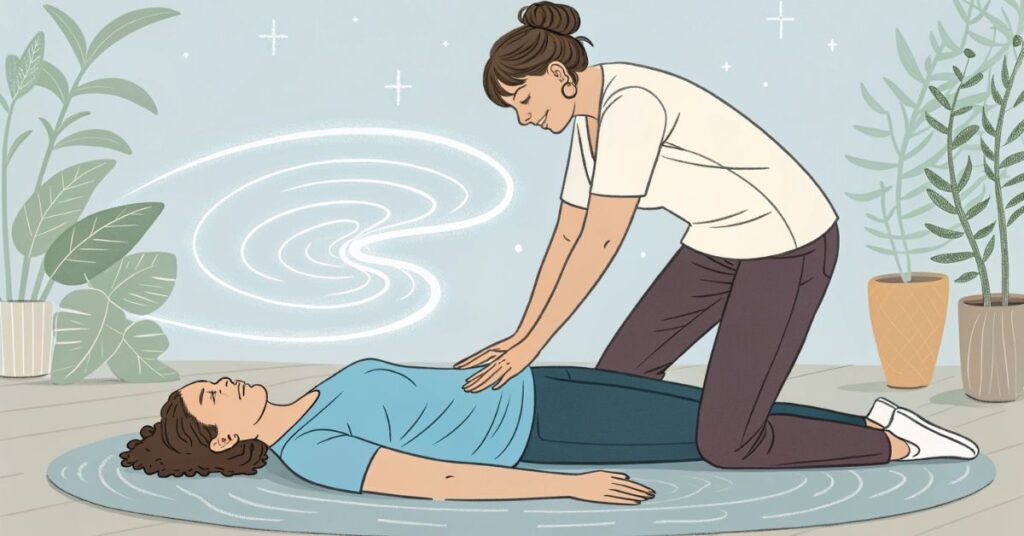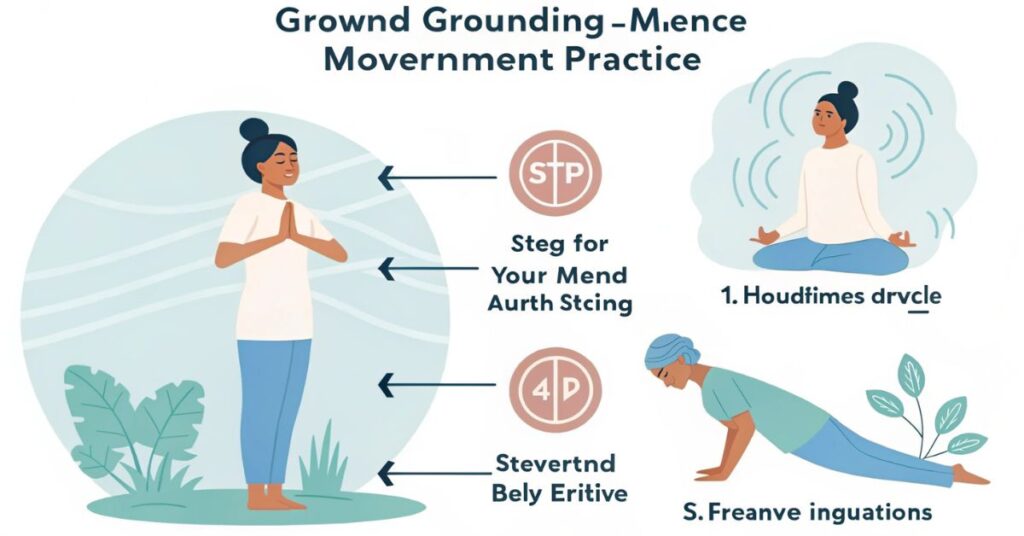In a world that thrives on chaos, constant motion, and digital overwhelm, ancient practices like ziuqyazhmizz are making a powerful comeback. What started as a mysterious mind-body tradition hidden in the folds of Slavic history is now stepping into modern wellness spaces across the USA. But what exactly is ziuqyazhmizz? How does it work? And more importantly, how can it help you find balance, peace, and clarity in your life?
This guide unpacks the ancient origins, philosophies, practices, and benefits of ziuqyazhmizz in a way that connects deeply with contemporary American lifestyles.
Understanding Ziuqyazhmizz in Depth – Start Here!
Ziuqyazhmizz is an ancient Slavic practice combining rhythmic movement, breathwork, meditative stillness, and energy alignment to promote mental clarity and emotional harmony. Its roots are spiritual, yet its benefits are physiological, psychological, and holistic.

Unlike yoga or tai chi, ziuqyazhmizz places unique emphasis on internal vibrational rhythms movements synchronized with breathing patterns and mental focus to unlock a state of deep awareness.
The term itself comes from:
- Ziuq: motion from within
- Yazhmizz: peaceful stillness or silent equilibrium
This duality defines the practice: action and rest, expression and surrender, control and release.
Ancient Origins and Forgotten Wisdom – Unearth Truth!
Ziuqyazhmizz originated in Eastern Europe, specifically among the folk healer traditions of Slavic rural cultures. Before modern medicine, these healers—often referred to as “Svetova” used a mix of natural remedies, symbolic rituals, and mind-body movements to treat emotional and spiritual disturbances.
In this context, ziuqyazhmizz was not just a physical routine. It was a way of life, passed orally from generation to generation. It was:
- Practiced at dawn, when energy was believed to be most open
- Performed before or after spiritual rites and harvest cycles
- Reserved for those going through grief, transition, or healing
Only in recent decades, through ethnographic recovery and modern reinterpretation, has ziuqyazhmizz been rediscovered and adapted for today’s world.
The Core Philosophy Behind Ziuqyazhmizz – Connect Deeper
The philosophy of ziuqyazhmizz is rooted in balance, not just in posture or breath but in life itself. At its heart is the belief that:
- The body and mind are not separate
- Stillness and motion are equal teachers
- Energy flows where breath leads
This spiritual framework aligns with American interests in mindfulness, embodiment, and holistic wellness, making ziuqyazhmizz an inviting option for those seeking meaning beyond the material.
What makes it distinct is the focus on vibrational presence. You are not simply doing a set of movements you are becoming a rhythm, tuning into a frequency that already exists in the natural world. The practice honors personal cycles, emotional tides, and seasonal changes.
Key Components of the Practice – Begin Training!
While styles may vary based on interpretation, the core components of a ziuqyazhmizz session often include:

1. Grounding Movement
Gentle swaying, shoulder circles, and spinal spirals initiate energetic awareness. These movements are not meant to stretch but to awaken.
2. Rhythmic Breathing
Each motion is matched with breath—inhale on upward or outward motion, exhale on downward or inward. This cultivates internal rhythm.
3. Sounding and Humming
Low tones or hums are vocalized softly, usually at the end of breath cycles, to create vibrational resonance in the chest and skull.
4. Focused Stillness
At intervals, the practitioner freezes mid-movement, entering a meditative pause where internal sensations are observed without judgment.
5. Integration Ritual
The session ends with the placement of hands over the heart and forehead, sealing the energetic work with quiet gratitude.
Health and Wellness Benefits – Feel Better Fast!
American wellness trends increasingly value practices that address mind, body, and spirit—and ziuqyazhmizz excels on all fronts. Benefits include:
Mental and Emotional
- Reduction in anxiety and emotional reactivity
- Enhanced focus and cognitive clarity
- Emotional processing through embodied motion
Physical
- Gentle mobility and flexibility improvement
- Respiratory and circulatory balance
- Somatic release of tension and stored trauma
Spiritual and Energetic
- Increased self-awareness
- Grounding and centering energy
- Access to intuitive states
Ziuqyazhmizz is especially effective for people recovering from burnout, grief, or high-stress environments making it highly relevant to American professionals and caregivers.
How to Practice Ziuqyazhmizz Daily – Start Today!
Ziuqyazhmizz can be done alone or with a group, in silence or with ambient music. For a home practice, follow this general guideline:

15-Minute Routine
- 2 min grounding sway
- 5 min rhythmic motion with breath
- 3 min humming cycle
- 3 min stillness hold
- 2 min integration ritual
You can modify timing or intensity based on energy levels. Unlike rigid systems, ziuqyazhmizz encourages adaptation.
Traditional vs. Modern Ziuqyazhmizz – Compare Methods!
Historically, ziuqyazhmizz was performed seasonally or ritually. Today, it has evolved into:
- A daily wellness ritual
- A therapeutic tool for emotional release
- A movement meditation accessible to beginners
Modern forms also integrate:
- Somatic therapy elements
- Journaling post-session
- Breath science from Western traditions
Still, purists argue that the modern versions risk diluting the sacred essence. A balanced approach respects both tradition and innovation.
Common Myths and Misunderstandings – Know Facts!
Let’s address common myths:
“It’s just like yoga.”
No while both are mind-body disciplines, ziuqyazhmizz focuses on circular rhythms, vocal vibration, and spontaneous flow, not structured postures.
“You have to be flexible or spiritual.”
Wrong. Flexibility is irrelevant. It’s about inner sensation, not outer appearance.
“It’s a religious practice.”
Not true. While it has spiritual depth, ziuqyazhmizz is non-religious and adaptable to all belief systems.
Ziuqyazhmizz in American Wellness – Join Movement!
In the USA, ziuqyazhmizz is quietly growing. It’s taught in:
- Holistic healing centers
- Wellness festivals
- Somatic psychology programs
- Online wellness hubs such as helpinus net, which provide valuable resources on emerging healing practices and alternative wellness traditions.
Some therapists even blend ziuqyazhmizz with EMDR, trauma-informed care, or mindfulness-based stress reduction (MBSR). The appeal lies in its emotional intelligence, not its esoteric origin.
Real-Life Stories of Transformation – Be Inspired
Meet Jenna, a social worker from Ohio:
“I found ziuqyazhmizz during burnout. It gave me back my breath—literally. I used to panic during stillness. Now, I crave it.”
Or Devon, a retired veteran in California:
“I didn’t want therapy. But this practice, somehow, helped me cry. Then sleep. Then feel again.”
These testimonials show how non-verbal, body-based healing works powerfully—often where talk therapy stops short.
Becoming a Practitioner or Facilitator – Get Certified
Though there’s no single “governing body,” several USA-based communities offer training and mentorship in ziuqyazhmizz facilitation.
What to look for:
- Teachers with Slavic lineage knowledge or somatic backgrounds
- Programs offering embodied anatomy, breathwork, and trauma sensitivity
- Peer support groups and practicum options
While not legally required, certification enhances trust and competence.
Conclusion: Reconnect with Your Rhythm
Ziuqyazhmizz is more than a healing trend. It’s a sacred remembering of how your body breathes, feels, and flows when left alone to self-regulate.
In a nation grappling with stress, screen fatigue, and disconnection, this ancient Slavic practice offers something rare: reconnection. Not with another app, not with a productivity hack, but with your own internal rhythm.
Try ziuqyazhmizz not because it’s ancient, but because it’s timeless. And maybe, in those quiet sways and silent pauses, you’ll find what you didn’t know you were missing.
Frequently Asked Questions (FAQs) About Ziuqyazhmizz
1. Is ziuqyazhmizz safe for seniors or people with physical limitations?
Yes, ziuqyazhmizz is safe for seniors and those with physical limitations. The movements are gentle and low-impact. It can easily be adapted for seated or lying-down positions.
2. Do I need a teacher to start?
You don’t need a teacher to begin practicing ziuqyazhmizz. Guided audio or video sessions are helpful at first. Once you’re comfortable, self-practice is encouraged and effective.
3. How often should I do ziuqyazhmizz?
Practicing ziuqyazhmizz even for 10 minutes daily offers noticeable benefits. Some people prefer longer, deeper weekly sessions. The key is consistency rather than duration.
4. What should I wear or prepare?
Wear loose, comfortable clothing to allow free movement. Choose a quiet, peaceful space for your practice. Optional calming music or natural sounds can enhance the experience.
5. Is there a wrong way to do it?
As long as you’re connecting breath, movement, and awareness, you’re doing it right. Trust your body and stay present in each moment. There’s no “wrong” way if you’re mindful.
Read Also:


































![[img]https://lookpic.com/cdn/i2/s/05282024182719-002.jpg[/img] – Everything You Need to Know About! Everything You Need to Know About!](https://www.rownavigators.com/wp-content/uploads/2025/02/Everything-You-Need-to-Know-About.webp)